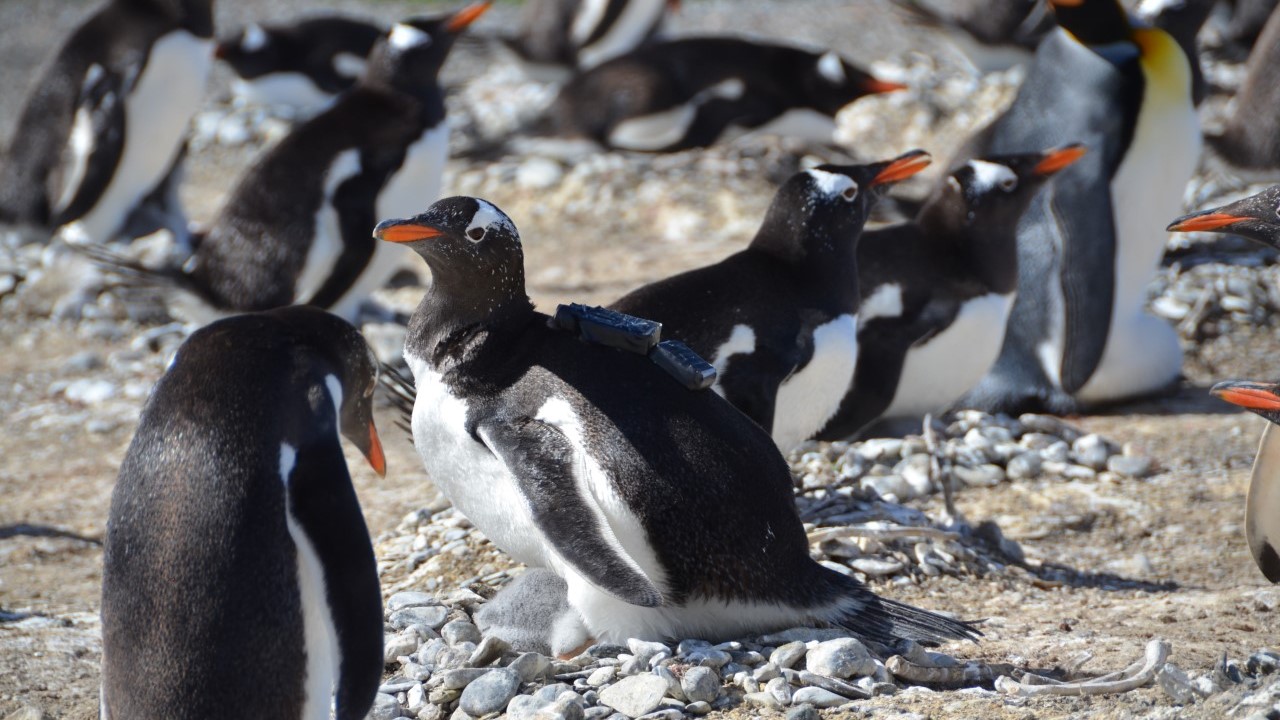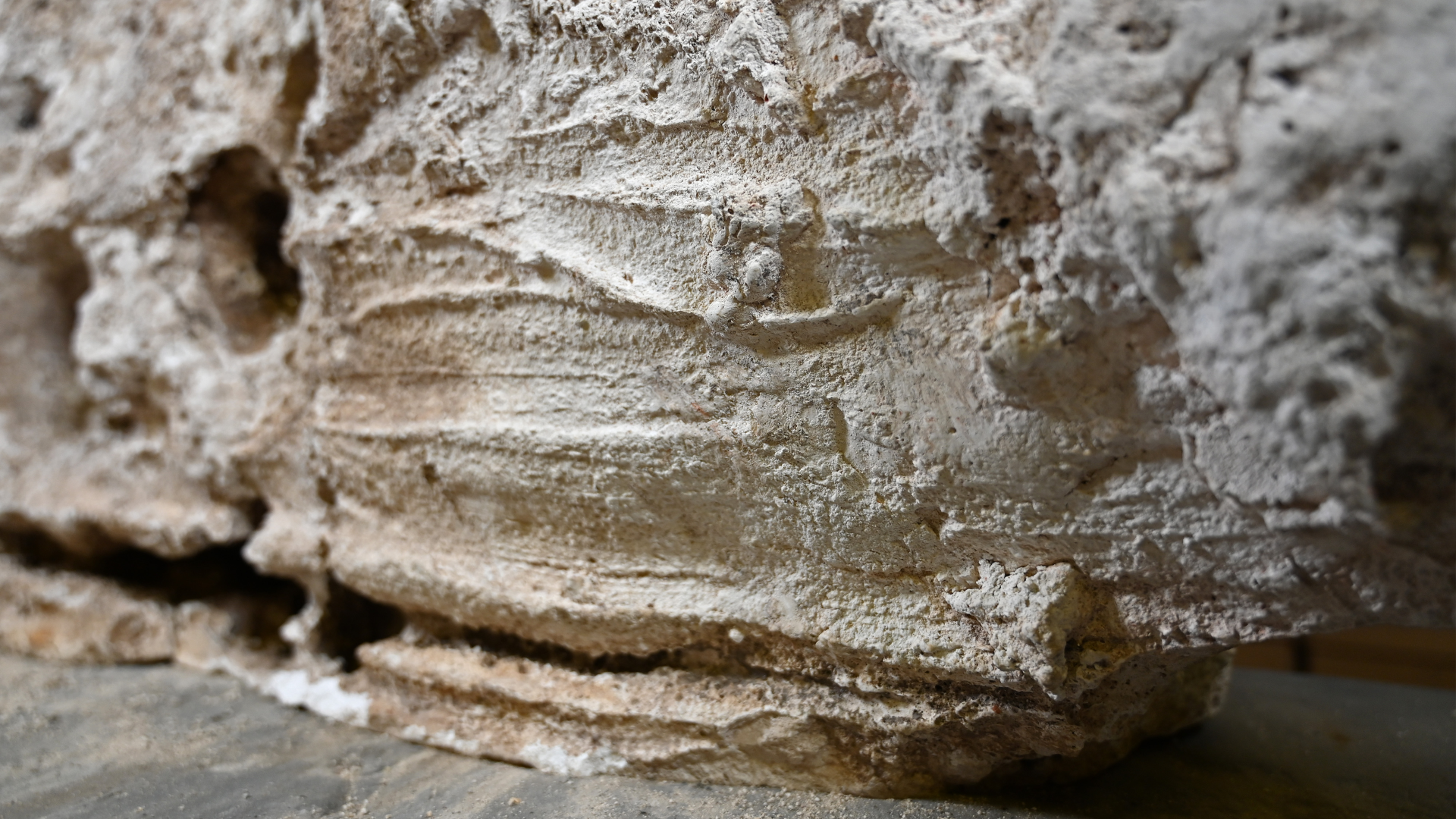Spellbinding new 'selfie' video captures penguin feasting on giant sardine ball
The video was released for Penguin Awareness Day.
A spellbinding new "selfie" video captures a Gentoo penguin feasting on a giant ball of sardines and soaring through the sea off Argentina.
Gentoo penguins normally feed near the seabed, but this new footage from the Beagle Channel in southern Argentina proves they dine on shoals of sardines near the surface given the chance.
"We wrote in many papers that the seabird community in the Beagle Channel rely on sardines but this is the actual proof, and now it is confirmed and with a star behind the camera: the penguin," Andrea Raya Rey, an associate researcher at WCS Argentina and researcher at the Argentine government's CADIC-CONICET research center, said in a statement.
Wildlife Conservation Society (WCS) Argentina released the footage on Jan. 20 to celebrate Penguin Awareness Day.
Related: Deep Blue Sea: Winning Underwater Photographs
Gentoo penguins are the third-largest penguins and grow up to 35 inches (90 centimeters) tall, according to the International Union for Conservation of Nature (IUCN). They live around Antarctica in a band that stretches up to southern South America.
Get the world’s most fascinating discoveries delivered straight to your inbox.
A research team from CADIC-CONICET strapped a special waterproof camera called "PenguinCam" to a male Gentoo penguin as part of a collaborative research project with WCS Argentina, the Antarctic Research Trust and the Tawaki Project,
"We attached the device just for one foraging trip," Raya Rey said. On that trip, they recorded him slicing through schools of sardines to pick off individual fish. The video also shows other hunting penguins, as well as cormorants and albatross diving in for their own sardines from above the surface.
The team removed the PenguinCam after the penguin returned from his fishing trip and monitored his breeding nest to ensure he was unaffected by the experience. "The Gentoo continued with its parental duties and taking care of the offspring," Raya Rey said.
The research is part of a long-term effort by WCS and their collaborators to study the food and space needs of penguins and help protect them.
Originally published on Live Science.

Patrick Pester is the trending news writer at Live Science. His work has appeared on other science websites, such as BBC Science Focus and Scientific American. Patrick retrained as a journalist after spending his early career working in zoos and wildlife conservation. He was awarded the Master's Excellence Scholarship to study at Cardiff University where he completed a master's degree in international journalism. He also has a second master's degree in biodiversity, evolution and conservation in action from Middlesex University London. When he isn't writing news, Patrick investigates the sale of human remains.



